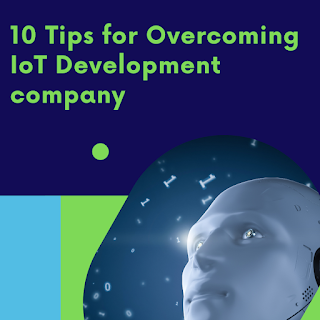The Internet of Things (IoT) is a constantly changing aspect of technology. continues to be a transformative force. With each passing year, IoT development takes centre stage, pushing boundaries and redefining industries. As we step into 2023, it's crucial to examine the trends that are poised to shape the IoT development landscape and drive innovation in this dynamic field. In this article, we delve into the IoT development trends for 2023 that promise to unleash its full potential.
1. Edge Computing Integration
Edge computing is set to revolutionize IoT application development in 2023. Edge computing decreases latency by processing data more nearby the source. latency and enhances real-time decision-making. IoT development services are increasingly focusing on creating applications that leverage edge computing to deliver faster, more efficient, and responsive solutions.
2. Enhanced Security Measures
As IoT applications continue to increase, security remains a paramount concern. IoT software development will prioritize robust security measures, including advanced encryption, authentication protocols, and secure device management. IoT product development will adhere to the strictest security measures to safeguard sensitive data and connected devices.
3. AI and Machine Learning Integration
IoT app development will witness greater integration of artificial intelligence (AI) and machine learning (ML) in 2023. These technologies will enable IoT applications to learn from data, predict outcomes, and optimize processes. This synergy will be especially prominent in Healthcare, manufacturing, and smart cities.
4. Sustainability and Green IoT
Sustainability is not just a buzzword; it's a driving force in IoT development for 2023. IoT development companies are increasingly focused on creating eco-friendly solutions. Smart energy management, waste reduction, and environmentally conscious IoT product development are expected to gain momentum.
5. 5G-Powered IoT
The rollout of 5G networks is set to turbocharge IoT app development. With faster and more reliable connectivity, IoT applications can transmit and receive data at unprecedented speeds. This will open up new possibilities for IoT development services, enabling high-bandwidth applications in autonomous vehicles, augmented reality, and more.
6. IoT in Healthcare
The healthcare sector will witness a surge in IoT application development. IoT development companies are working on remote patient monitoring, wearable health tech, and AI-driven diagnostics. These innovations promise to improve patient outcomes and reduce healthcare costs.
7. IoT for Smart Cities
IoT development is integral to building more innovative, more efficient cities. Smart traffic management, waste management, and energy-efficient infrastructure are on the horizon. IoT app development companies are collaborating with urban planners to create connected cities that enhance the quality of life for residents.
8. Blockchain for IoT Security
The use of blockchain technology will be crucial in bolstering IoT security. By providing immutable and transparent data storage, blockchain enhances the trustworthiness of IoT applications. It ensures that data is tamper-proof, critical for industries like supply chain management and logistics.
9. IoT Development Ecosystems
IoT development services are increasingly focusing on creating comprehensive ecosystems. These ecosystems provide developers with the tools and resources needed to build IoT solutions more efficiently. This trend encourages innovation and accelerates time-to-market.
10. Cross-Industry Collaboration
IoT development companies are recognizing the benefits of cross-industry collaboration. The convergence of technologies from various sectors, such as Healthcare, agriculture, and manufacturing, leads to the creation of groundbreaking IoT applications.
Consequently, 2023 seems to be a fun year for IoT development, with trends that encompass edge computing, security, AI, sustainability, 5G, Healthcare, smart cities, blockchain, development ecosystems, and cross-industry collaboration. As IoT continues to transform industries and daily life, staying informed about these trends will be essential for businesses and developers aiming to unleash their full potential. Whether you're an IoT development company or an enthusiast, embracing these trends will be crucial to success in the rapidly evolving world of IoT.




